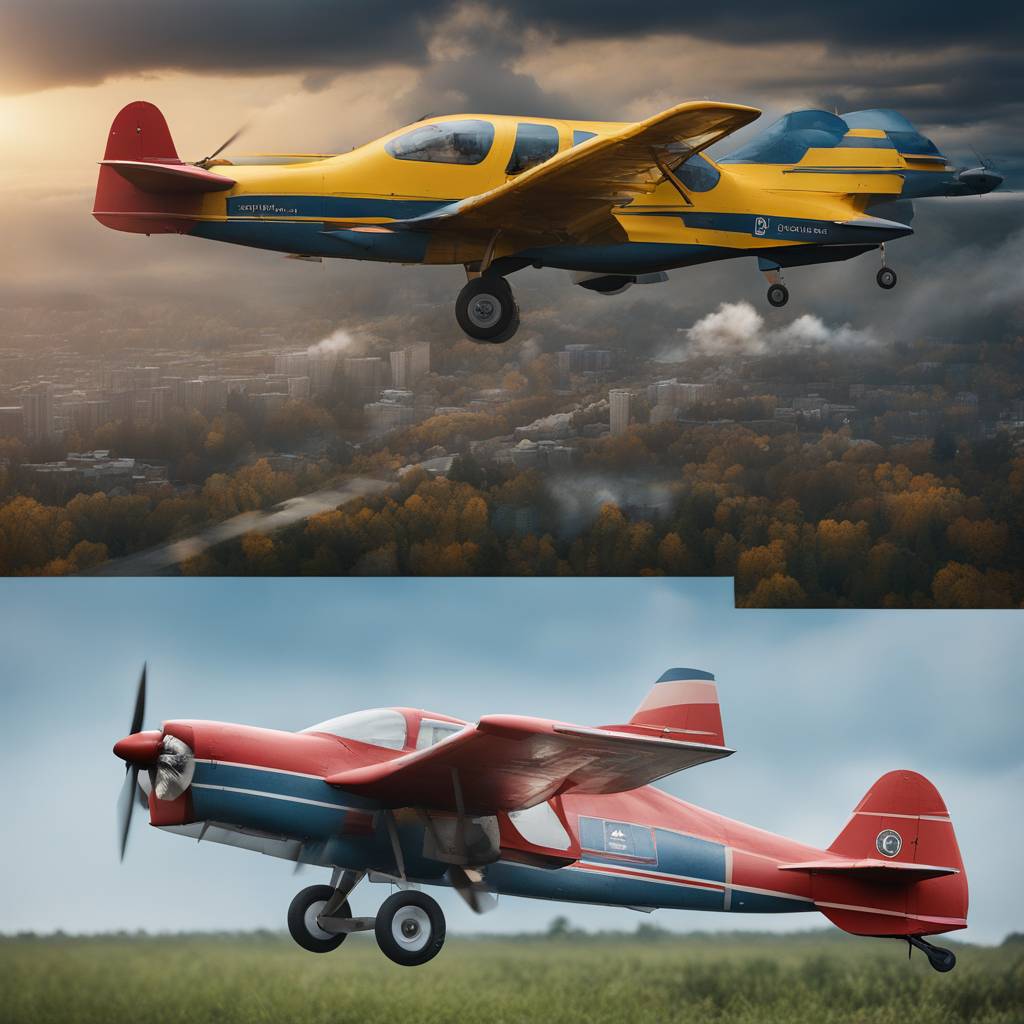In a startling development, Ukraine has escalated its drone campaign against strategic industries in Russia by using Cessna-style light planes fitted with remote controls and explosives. The DIY drones have been flown over 600 miles to strike a Russian factory in Yelabuga, which produces drones similar to the ones used by Ukraine. The billowing fireball resulting from the impact of one of these drones demonstrates the size of the explosive payload, capable of hauling half a ton load over long distances.
Russian forces have recorded the attacks as the light plane struck the Alabuga Special Economic Zone industrial campus, causing significant damage to the factory and potentially an adjacent dormitory for workers. The impact of these drones, which can range up to 600 miles with explosive payloads, has been felt in reduced gasoline production by more than 10% in Russia. Furthermore, strikes on factories like the Alabuga facility could impact the production of Russia’s long-range drones, such as the Shahed model.
Ukrainian engineers have developed numerous types of long-range strike drones, some of which have been used for one-way missions into Russia to strike oil refineries and now drone factories. These strikes have the potential to limit Russia’s drone production and give Ukraine a crucial advantage in the ongoing conflict. The transformation of light planes into drones is reminiscent of past efforts by the U.S. Air Force Research Laboratory and Virginia-based DZYNE Technologies to modify a Cessna 206 into a drone, offering the benefits of unmanned operations without the complexity and cost associated with new unmanned vehicles.
The relative simplicity, reliability, and cost-effectiveness of using light-plane-based drones make them attractive for warfare. In addition to being inexpensive, these drones can also be stealthy due to their innocuous appearance, making them difficult to detect and intercept. Russian commanders are facing challenges in defending their territory due to limited air defenses, which are insufficient to protect both front-line forces and critical infrastructure such as cities and factories. The concentrated nature of Russia’s drone industry, with one state-sponsored company producing the majority of explosive FPV drones, leaves it vulnerable to sustained attacks by Ukrainian drones.
As the conflict in Ukraine enters its third year, the use of drones for strategic strikes by Ukraine poses a significant threat to Russian military capabilities. With a decentralized drone industry and the ability to target key Russian facilities, Ukraine could gain a critical advantage in the ongoing conflict. The implications of these drone strikes on Russia’s drone production and wider war efforts are yet to be fully realized, but they highlight the evolving nature of modern warfare and the challenges faced by traditional military defenses in countering such threats.













